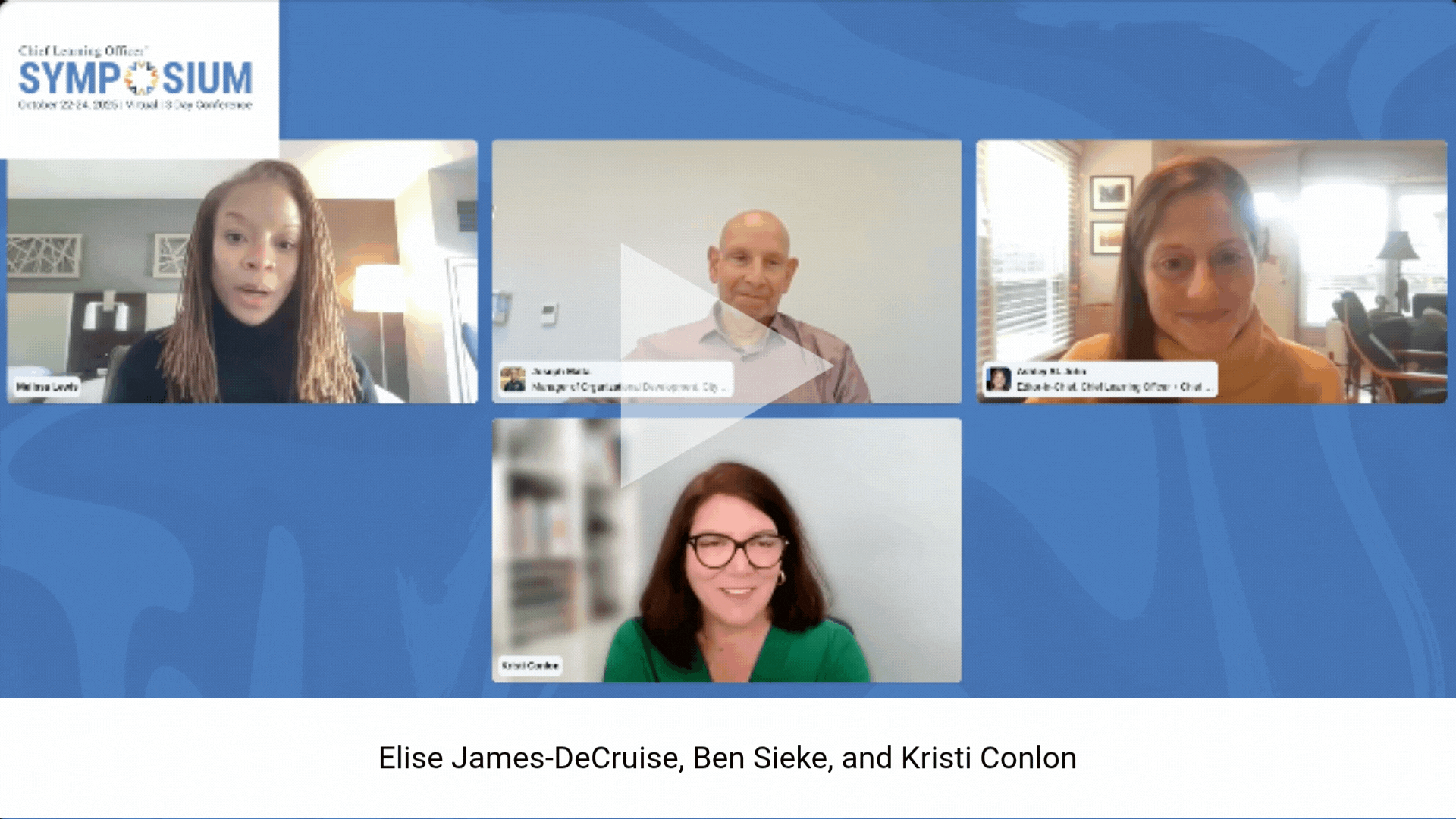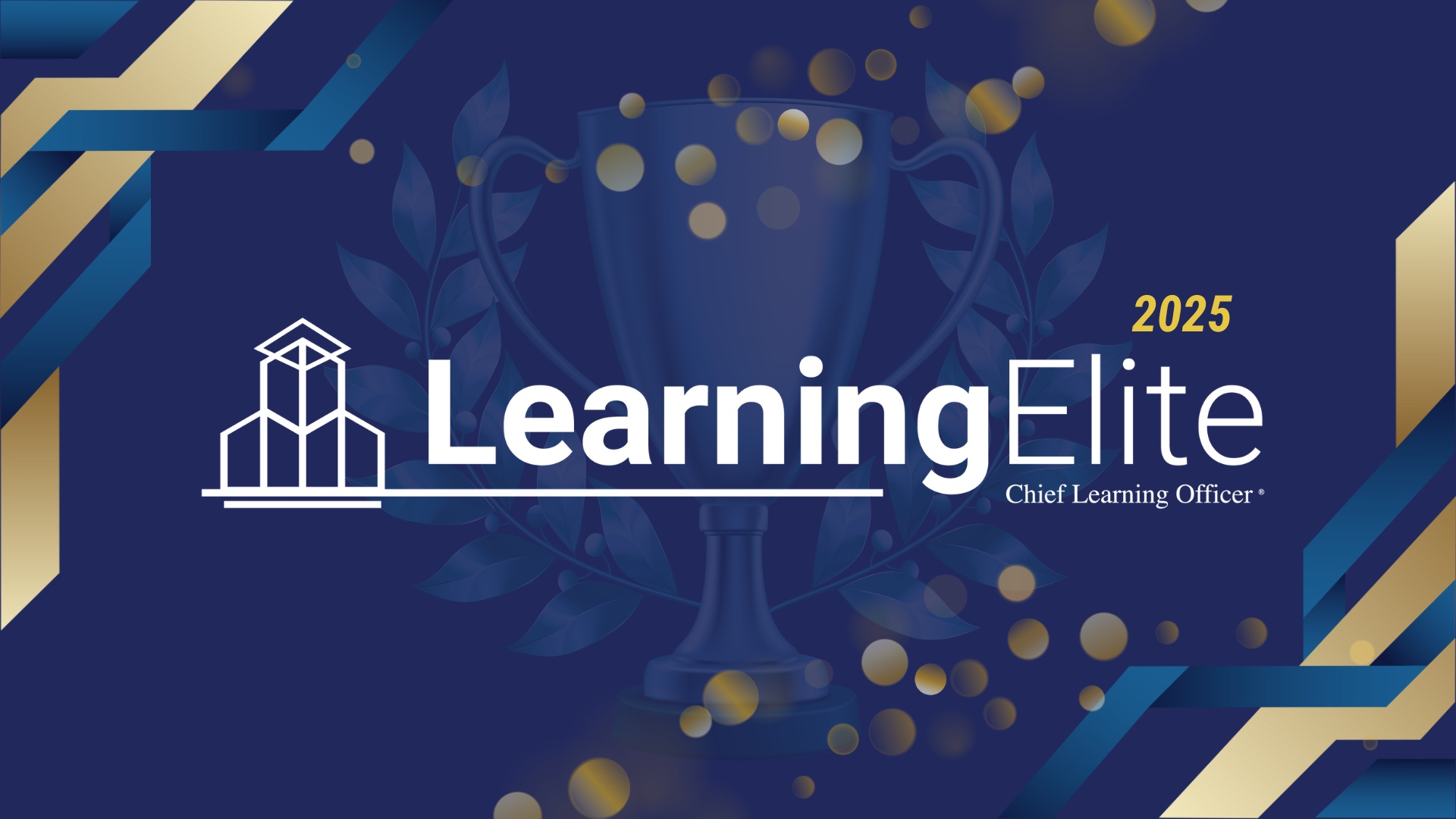The first corporate universities were created more than 60 years ago as a place for employees to learn in conjunction with the company’s vision and business goals. General Electric’s Crotonville started in the mid-1950s, McDonald’s Hamburger University opened its doors in 1961, and Disney University and Motorola University debuted in the ’70s. They became more widespread and prominent in the ’80s and ’90s and quickly became the “places to go” to learn in the business world. But technology’s pace of change and the emergence of digital learning aggregators have brought the effectiveness of the traditional corporate university model into question.
Daniel Gandarilla, vice president and CLO at Texas Health Resources University, said the corporate university is not dead — it’s being redefined. In his research on the subject, Gandarilla found about 10 different viable definitions for the corporate university that are continuing to evolve. This one by Kevin Wheeler and Eileen Clegg from 2005 exemplifies how the definition is evolving: “A true corporate university (CU) has moved beyond training and education and into the daily challenge of getting results. It provides leadership in supporting people and processes to achieve bottom-line success for the organization.”
Some argue that the term “corporate university” shouldn’t even be used anymore. Senior Vice President and CLO at Northwell Health Kathleen Gallo said the term is outdated. “Words matter. Even when I hear it, I think of 30 years ago. It pigeonholes corporate universities as an antiquated model,” she said. “All business organizations need to have a structure in place that provides systematic processes to advance their organization through growing the knowledge, competencies, skills and attitudes of their employees – whatever they call that.”
David Vance, executive director at the Center for Talent Reporting and former president at Caterpillar University, said if he could run Caterpillar University again he wouldn’t use the term “university” in the title. He argues that for many people it connotes the idea of an academic institution. “It’s like you’re trying to bring the academic into the corporate world, and it brings up notions of a large course catalog that employees, like students, just pick from,” Vance said. “That’s the old, traditional training department model. The corporate university was supposed to be about strategic alignment and focused courses.”
Vance said he’s seen a concerning trend of CLOs changing the mission of corporate universities to simply “giving employees what they want.” But he said that attitude is reverting to the reactive model, which is the opposite of where the future needs to go. “They weren’t living back then, so they think it’s a brand-new thing, but really they are going back to where we were 40 years ago,” he said.
If the sole mission of the corporate university is to give employees what they want, Vance argues those universities will become extinct — displaced by aggregators who can give employees what they want at low costs and entirely outside the corporate system. “My objection is against the model that gives up on this corporate university that came out of the late 1980s and just goes to reactively meeting employee’s needs,” he said. “I would recommend we still have the traditional focus on strategic alignment meeting business needs, plus meeting individual learning needs using all the new tools that are available to us.”
Then vs. Now
Fred Harburg, former CLO of Motorola University, said from the start corporate universities have been evolving to keep pace with changes in technology, learner needs and corporations themselves. He said one of the most significant changes is online learning. “People think of it as a relatively recent occurrence, but it started more than 40 years ago in the military when people did what they called computer-based training,” he said. “It was terrible and typically extremely boring and difficult.”
Harburg said technology in learning has progressed slowly over time. “People think technology is moving at lightning speed — well, the technology of online learning moved at a snail’s pace over those 40 years in terms of the improvements from the very early times to now,” he said. “What we see now is this huge shift. Technology is changing the whole nature of work and the world.”
But Harburg said as the nature of corporate universities continues to change, they are still needed for talent acquisition, onboarding, performance evaluations, employee engagement and other aspects involved with growing talent and meeting the future needs of the company. He said someone will always need to steward those systems and processes.
“The two most important things in a business are its people and its culture. The two are so meshed it’s hard to separate one from the other,” Harburg said. “Some companies have separated the talent management role from the learning role, but I think that’s an artificial separation.”
Harburg said the ideal corporate university today understands the business, the customers and the talent of the organization and helps close the gaps that exist between what is and what might be to provide better services, better quality products and a more engaged and empowered workforce.
A Dual Focus
AT&T University was created in 2008 with a vision to drive alignment across the telecommunications company from a leadership, culture and knowledge perspective. AT&T Vice President and CLO John Palmer said his company’s original model for the corporate university is still viable, as it’s always been aligned with business objectives. “We used it in its early inception to drive alignment of many companies that came together through mergers and acquisitions,” Palmer said. “Now we’re using it as the driver for our reskilling program that will help us transform this business into where we’re going in the future.”
Palmer said at AT&T, they pride themselves on having direct alignment to each business unit at every level of learning. “That’s the key to maintaining relevancy as a corporate university — to ensure that you understand the business needs and you have the connections to the business units so you are jointly driving programs and jointly driving the key decisions about the curriculums that are necessary to keep the employees equipped for the future.” Palmer said if corporate universities are heavily focused on business strategy, that itself will drive the employee engagement.
Texas Health’s Gandarilla emphasized that corporate universities should be used as a strategic tool with a situational focus. “If we know that our organization is struggling with engagement, that may be the most appropriate use at that time,” he said. “But if we’re struggling to make some sort of organizational transformation, it might be more focused on what the knowledge is related to the industry and how it’s changing.”
Gandarilla argues the focus should be achieving business results first. “We need to expand our mind to understand that a corporate university may not be a collection of classes or a curriculum,” he said. “A good corporate university knows how to listen and identify problems, come up with solutions and respond to the changing environment of the business that it operates in — whether that’s with traditional classes or not.”
However, Palmer said he wouldn’t bifurcate curriculum from business process execution. “One should complement and lead to the other if you’re doing the first right,” he said. Either way, most learning leaders agree executive leadership needs to be heavily involved in the corporate university so the university’s guiding principles align with those of the company’s.
At several organizations, including AT&T and Northwell Health, many C-suite executives are faculty of the corporate university. Northwell Health’s Gallo said the leader-as-teacher model is effective at getting the senior leaders in front of employees. “It also helps drive culture change, which is another fundamental purpose of a corporate university,” she added. Palmer said having leaders drive the curriculums about leadership development helps employees understand where the business is going.
Changing with Technology
During the past 10 years, Harburg said the digitization of business and the use of technology have dramatically changed the nature of how consumers and businesses operate. “And if you look 25 years ago, it looks like we’re on a different planet,” he said.
“The whole notion of algorithms, artificial intelligence and machine learning — to put those things in the context of the dignity of the human being, of the protection of privacy and of the great need for us to honor the diversity and uniqueness of people — that’s a huge challenge for the university to take on,” Harburg said. He said corporate universities should step up and develop a point of view to help with ethical, moral and technical dilemmas that technology brings.
Gandarilla said new technologies like augmented reality will aid in performance support-type training. He said a long-term focus for the universities will become to develop soft skills and partner with employees as technologies and businesses change. “Imagine you’re going through a change, they put you through the corporate university and support you in the transition — that’s the future,” he said. Gandarilla said the notion of a static corporate university must go away; it has to be agile and nimble to adjust to the needs of the time.
During the past year, AT&T has begun rolling out augmented reality and virtual reality in their curriculum. “Anytime you can take the physical and turn it virtual, that will drive a lot of speed and accessibility into any business that’s out there,” Palmer said.
Gallo said the future of the corporate university should be about the application of knowledge and the assessment of that application through case-based learning. “Back in the day, lecture was king. Now lecture is one of the last thing’s that’s effective,” she said. “What would have been lectured now goes out as pre-work. We trust our employees to acquire that knowledge by themselves. They don’t need to be spoon-fed through a lecture.”
With technology comes the question of whether or not a physical space is still needed to house a corporate university. Most learning leaders seem to acknowledge there is something symbolic about bringing people together. Gandarilla said it depends on the size, geography and scope of the business. He argues that it’s not necessary to have a physical space, but it is helpful in providing a place to bring employees together to share ideas. At Texas Health, the furthest employees are only 2.5 hours from the organization’s headquarters, so the firm is in the process of building a conference center to host training.
At Northwell Health, they do both virtual and in-house training. A lot of knowledge training that used to be done in-person is now done online, and the in-person training focuses on applying what’s been learned. “In healthcare, safety is dependent on teamwork,” Gallo said. “Trust is key, and we can only facilitate that in person.”
However, at the multinational AT&T, Palmer said the need for a physical space will lessen as technologies continue to advance. “We’re driving a lot of our curriculums to the virtual space so we can be more nimble and flexible and drive a lot more velocity into getting curriculums out to the masses, when it comes to the size and scope of our workforce,” he said.
Similarly, the global Caterpillar never had a physical building for its corporate university, and Vance said there’s never been a need for one. However, he said when it comes to leadership development and performance management there will always be a need for live instruction versus virtual.
As the delivery methods of learning have become more engaging, whether it be through online learning, gamification or virtual reality, Gallo said staying relevant by helping the organization thrive as it changes in response to the marketplace should be the most important goal of the corporate university. She said the corporate university will only become more important and will be a competitive advantage in the future.
“It keeps the company on their toes,” she said. “As you develop your employees, they are good prospects for the competition. It forces the company to be the employer that these high-performing individuals want to stay with.”

















